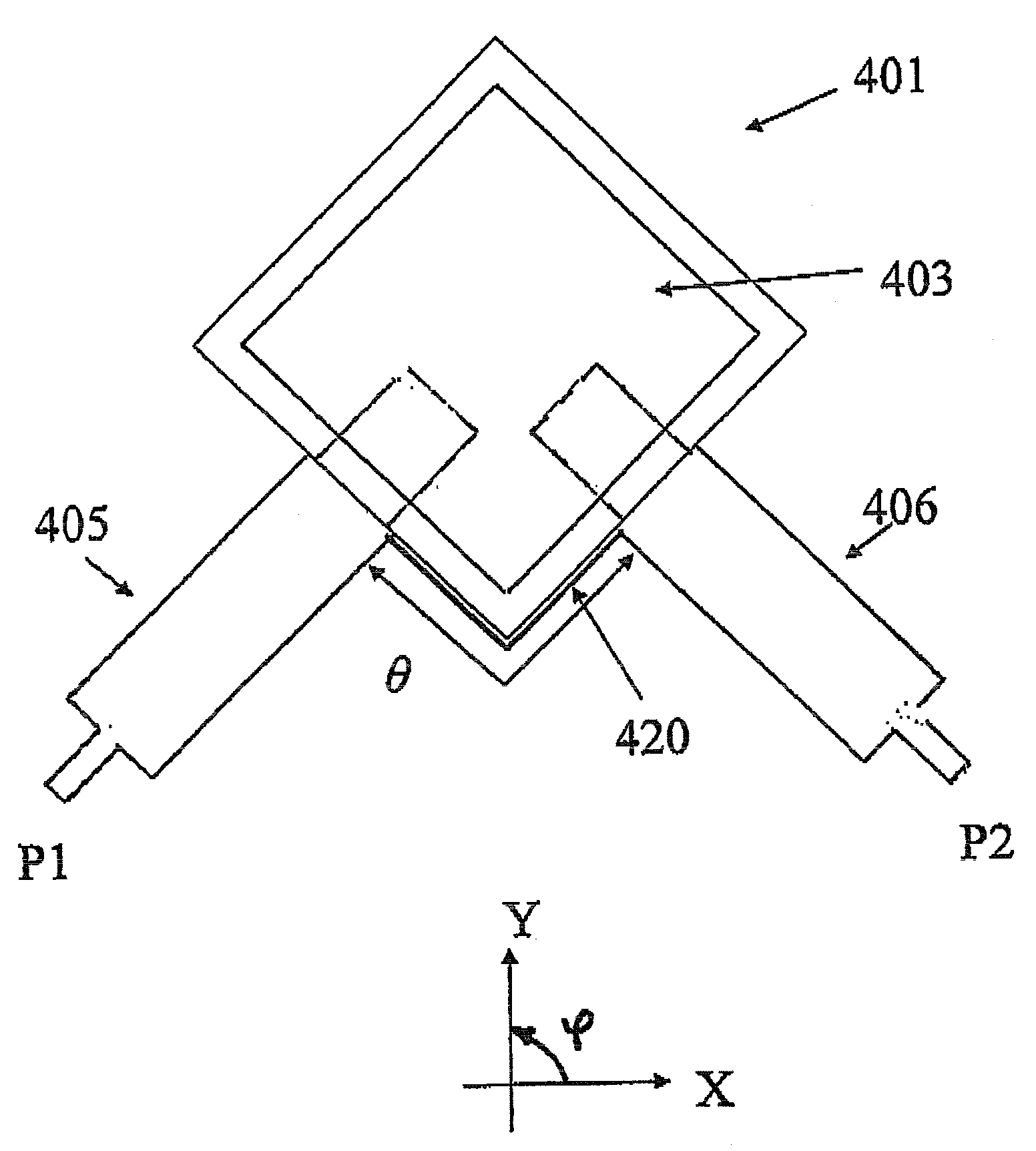Antenna isolation
a dual-polarized, antenna isolation technology, applied in the structural form of radiating elements, substantially flat resonant elements, resonant antennas, etc., can solve cancel out this specific unwanted signal, and no solution is shown for solving the problem of capacitive coupling related to the feeder itself, etc. problem, to achieve good antenna isolation, small size, and efficient compensation
- Summary
- Abstract
- Description
- Claims
- Application Information
AI Technical Summary
Benefits of technology
Problems solved by technology
Method used
Image
Examples
Embodiment Construction
[0034]Dual polarized antenna elements commonly suffer from imbalance due to mutual coupling for various reasons. Even though an antenna element may show a geometrical symmetry to a large extent, including the radiating part and the majority of the feed network, we typically have one or more points of asymmetry causing mutual coupling.
[0035]FIG. 2 shows one example of this for a patch antenna element including a ground plane 202, a top patch 203 and a lower patch 204. Here, an electromagnetically coupled patch element is fed by two orthogonal feeders 205, 206, both with a capacitive coupling to the two stacked patches. The antenna element is here not symmetrical, since the feeder connections are not symmetrical. For example, if we look into the element along for example the feeder 205 at the bottom of the figure, we see that only one side (the left side) of the other sides of each patch is loaded by another feeder 206, while the other sides (for instance the right side) have an open ...
PUM
 Login to View More
Login to View More Abstract
Description
Claims
Application Information
 Login to View More
Login to View More - R&D
- Intellectual Property
- Life Sciences
- Materials
- Tech Scout
- Unparalleled Data Quality
- Higher Quality Content
- 60% Fewer Hallucinations
Browse by: Latest US Patents, China's latest patents, Technical Efficacy Thesaurus, Application Domain, Technology Topic, Popular Technical Reports.
© 2025 PatSnap. All rights reserved.Legal|Privacy policy|Modern Slavery Act Transparency Statement|Sitemap|About US| Contact US: help@patsnap.com



